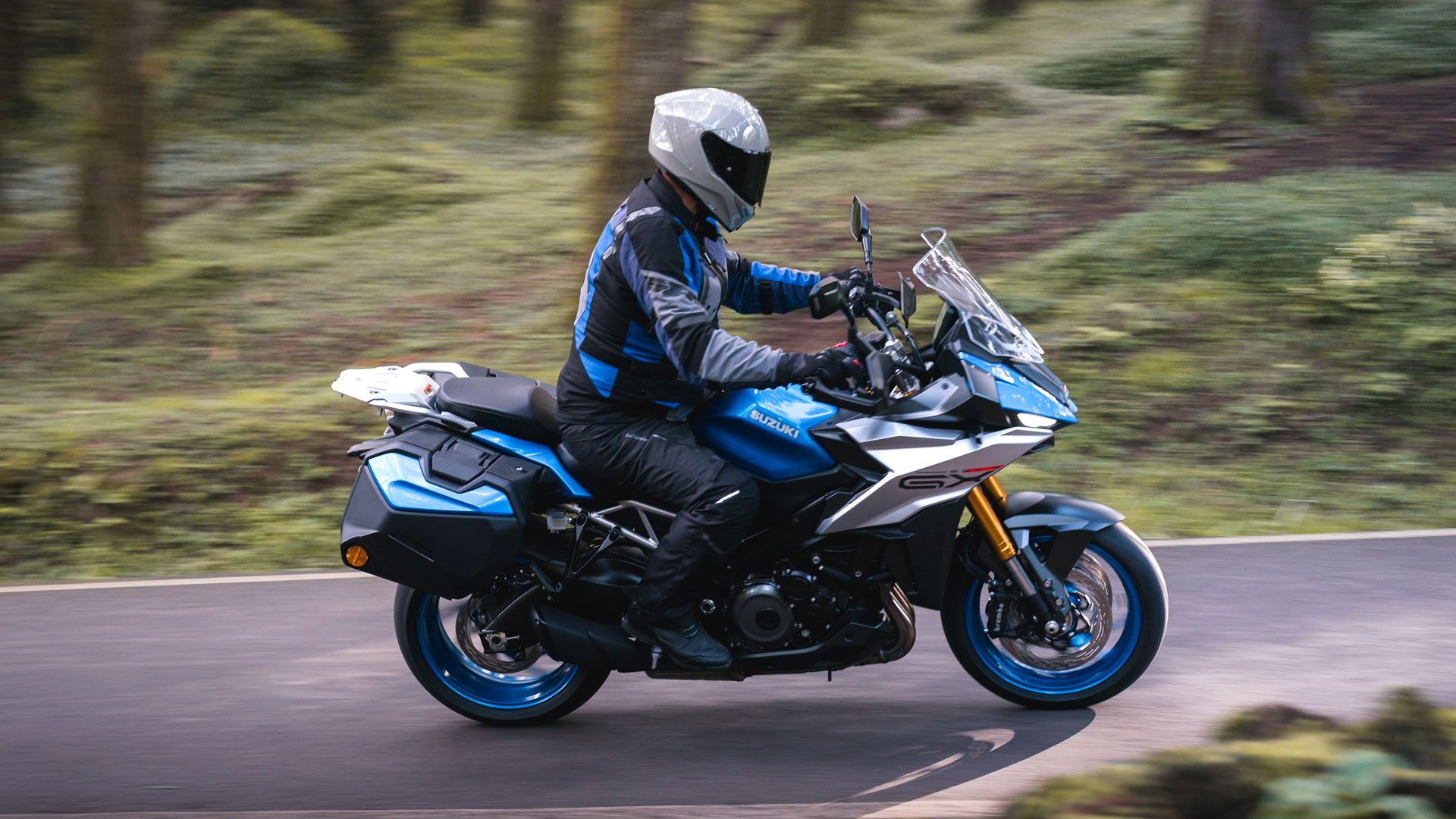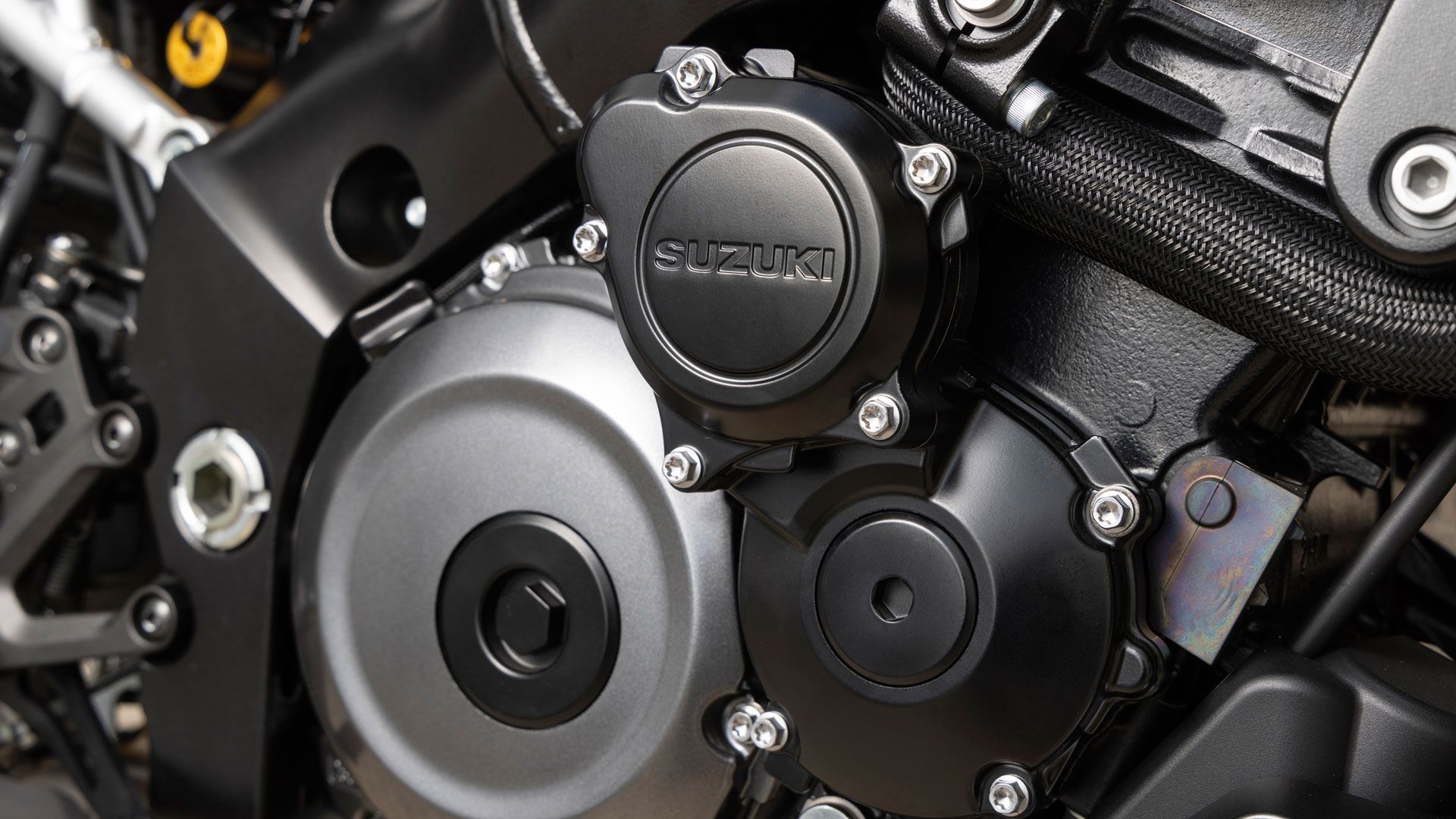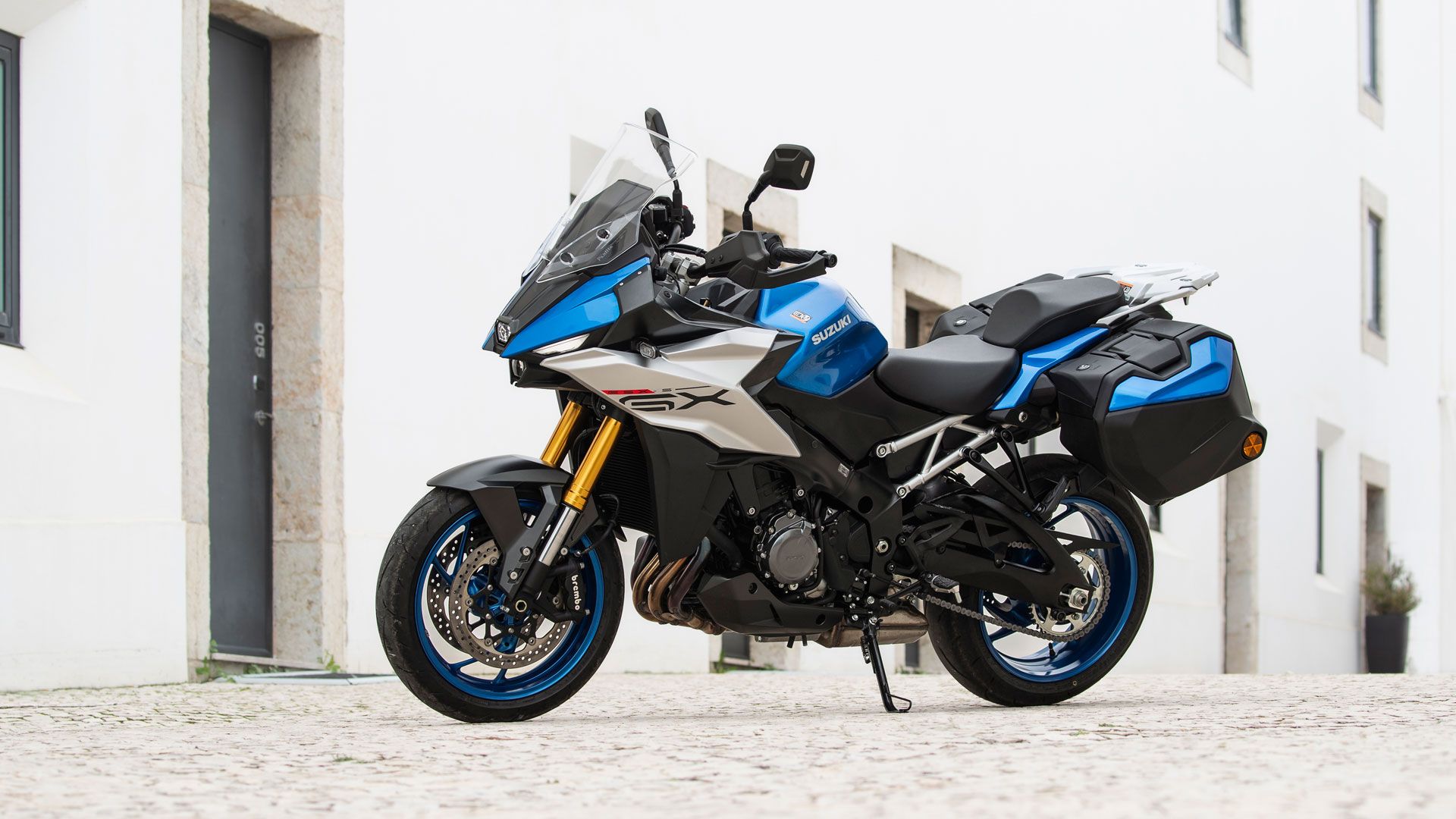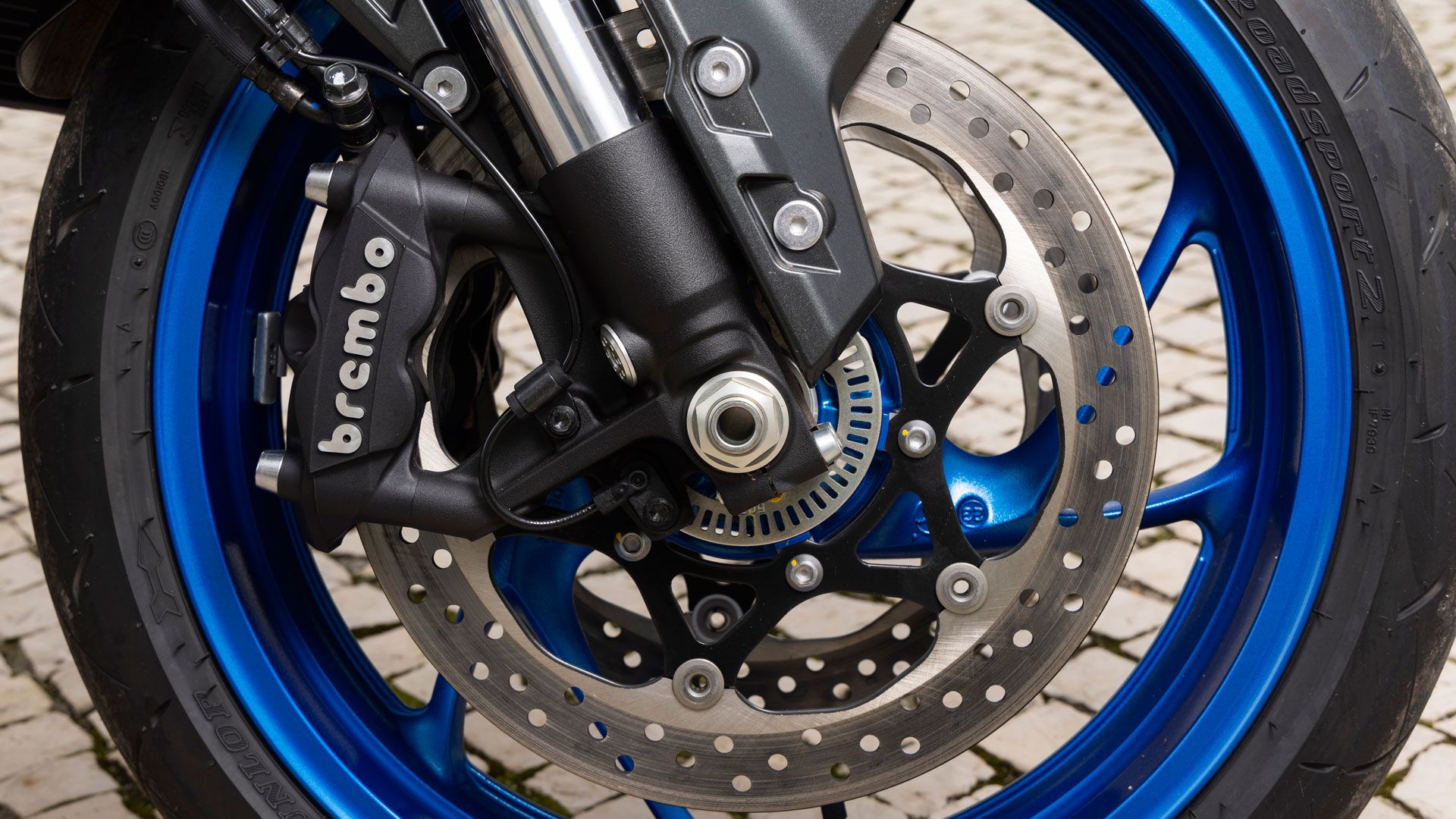DOSSIER
SUZUKI

Suzuki GSX-S1000 GX
The Suzuki GSX-S1000 SX is the third model in the four-cylinder family of the Japanese brand's saga after the naked version and the classic sport tourism. In this case it is again a motorcycle focused on high-flying tourism, but fitted into what is now called “crossover”.
These are basically models that, starting from the naked or the sports ones, as appropriate, have a large fairing and suspensions with greater travel that give them a greater proximity to the trail models, although they have no intention of being used for off-road driving.

MORE TECHNOLOGY...In the case of the GSX-S1000 GX, another connotation is added to these connotations, the improvement of its electronic equipment with the arrival of a six-axis IMU that expands the aids already available and also allows the incorporation of a new electronic suspension regulation system, something that is a novelty for the Japanese firm.
The mechanical basis of the new bike is actually the same as that of the GSX-S1000 and the GT version. In fact, the entire rear part is adopted from the latter, including the reinforced aluminum subframe, which is the main difference in the frame.

KNOWN ENGINE...Therefore, we find the traditional four-cylinder engine that comes from the GSX-R1000 series, a power plant not only more than proven, but also with perfect performance for these purposes. Maximum power is 112 kW (152 HP) at 11,000 rpm, with a torque of 106 Nm at 9,250 rpm, although the curve is actually so flat that you can take it without problems to 3,000 rpm and accelerate without hesitation to obtain immediate acceleration and progressive.

It now has three engine management modes called A, B and C, the first being sportier and the third indicated for low grip conditions. The truth is that you find a clear difference in each of them, with a much livelier response in A than in B, and with C much calmer when opening the accelerator.
VARIOUS BEHAVIORS...These driving modes pre-program the electronic aids and suspension adjustment, although you can also modify the traction control, the hardness of the hydraulics and the preload of the rear axle with the controls on the left pineapple. Since everything appears on a single color digital dashboard screen, it is extremely easy to navigate the settings and change them on the fly in a jiffy, a real success in this regard.

ELECTRONIC SUSPENSIONS...The novelty is found in the suspensions, which have a Showa mechanical base and a Hitachi Astemo semi-active type electronic adjustment system. The secondary hydraulic regulation system in both the fork and the shock absorber has a solenoid that works with a response speed of 1 kHz (0.001 s) and offers a much greater adjustment range than conventional manual ones.
It has three working curves that you can also choose in the frame and in the shock absorber an automatic hydraulic system that regulates the preload to adjust the height of the motorcycle with three other options that can also be manually selected if you wish. The front axle preload has to be adjusted manually with the usual screw placed on the fork legs.

The driving position has changed somewhat compared to the GT, with a higher and set back handlebar and a slightly higher seat, but without reaching the levels of a V-Strom. This relaxed ergonomics is complemented by a taller and wider fairing, which has lateral ducts in principle with the function of achieving the same effect as the spoilers on sports motorcycles, producing a vertical pressure effect to increase the stability of the front axle. high speed.

Instead, heated grips are an option, like an optional windshield or a “comfort” seat with different density, which by the way is clearly better. The rear part is similar to that of the GT, with its anchors for large suitcases directly on the body and with a new carrier that incorporates the passenger handles and serves as a base for a trunk. The seats of the two occupants are at different levels.

One of the great assets of this GSX-S1000 GX, as it is in the rest of its sisters, is its engine. It is true that the inline four-cylinder is a few years old, but it already had some truly brilliant features without the electronic update that it has undergone. On the one hand, it is a smooth engine from the bottom up, you can go in high gears without vibrations with a low and regular sound to accelerate immediately with the same absence of vibrations or protests, you simply echo the acceleration.

Another aspect in which it shines is the operation of the suspensions when it comes to absorbing potholes. Without having to put the softest mode on the hydraulics, going over manhole covers, ridges in the asphalt or pronounced potholes does not become a torment for the back, because they are almost completely filtered.

ON ANY TERRAIN...During the route we had the opportunity to travel on the outskirts of Lisbon a good stretch of road full of potholes and humps of very good size, both on the straights and in the middle of the curves and The bike in B mode could not jump over them, maintaining the line to follow.
In mode A the suspension is harder, but you only really notice it during strong braking and acceleration, in both A and B you have more than enough ground clearance in corners. What was perhaps most out of place was the choice of tires, Dunlop RoadSmart tires with their own specifications that felt a bit hard, with less pressure on those narrow roads they would have had more feel, although with all the aids they did not suffer from a lack of grip.
SPORTY...The bike moves easily and decisively and is always stable, and the brakes that we have criticized on other occasions, on this occasion always maintained power and feel, although we continue to ask for a radial pump to accompany the rest of the Brembo team.

On the highway you have a speed control if you want to forget about the accelerator, also with a very intuitive operation, the only thing missing is a slightly higher screen that takes away the wind at high speed, beyond that it maintains the outstanding capabilities of the entire series dynamically.
In any case, the most notable thing about this new Suzuki GSX-S1000 GX is the step forward it takes in terms of its possibilities to combine sporty behavior with comfort. When it comes to ordering, it is clear that an adjustable screen without having to dismantle the supports and some details, although it has systems that have already become common in the segment such as the connectivity of the frame with telephones to entertain you and be able to chat with your companion, which, by the way, will travel comfortably, with a good handhold and seeing the landscape from a higher position, as was already the case in the GT.
Its price is another handicap, the €18,799 it costs are clearly above the €15,015 of the GT, although it is also true that the electronics, and especially the electronic suspensions, make the price more expensive compared to more basic motorcycles. As is almost mandatory, Suzuki accompanies its new motorcycle with a set of options, many of which were already present in its sisters and that allow it to improve its touring options with luggage management and also improve its appearance and protection.

Price: €18,799; Engine: 4 cyl. online. Refr. liquid; Distribution: DOHC 16V; Bore x Stroke: 73.4 x 59.0mm; Displacement: 999 cc; Compression: 12.2:1; Max power dec.: 112 kW (152 HP) at 11,000 rpm; Max torque dec.: 106 Nm at 9,250 rpm; Power: 4 injectors. 44 mm nozzles; Driving modes: 4; Clutch Acc.: Cable; Gear: 6 ratios; Sec transmission : Chain; Chassis: Double aluminum beam; Swingarm: Double aluminum arm; Geometry: 25.5°/ 97 mm; front suspension: inverted fork; Bar Diameter / Travel: 43 mm / 150 mm; Adjustments: 3-way electronic; Rear Suspension/Travel: Progressive monoshock / 150 mm; Adjustments: 3-way electronic; Front brake: 2 310 mm discs; Calipers: 4 pistons; Rear brake: One 240 mm disc; Caliper: One piston; ABS type/ Disconnection: In curve / No; Front wheel: 120/70-17". Rim 3.50"; Rear wheel: 190/55-17". Rim 6.00"; Measures. Chap. tank: 19 l; Full weight: 232 kg; Wheelbase: 1,470 mm; Seat height: 845 mm.
by: Pepe Burgaleta

Nenhum comentário:
Postar um comentário